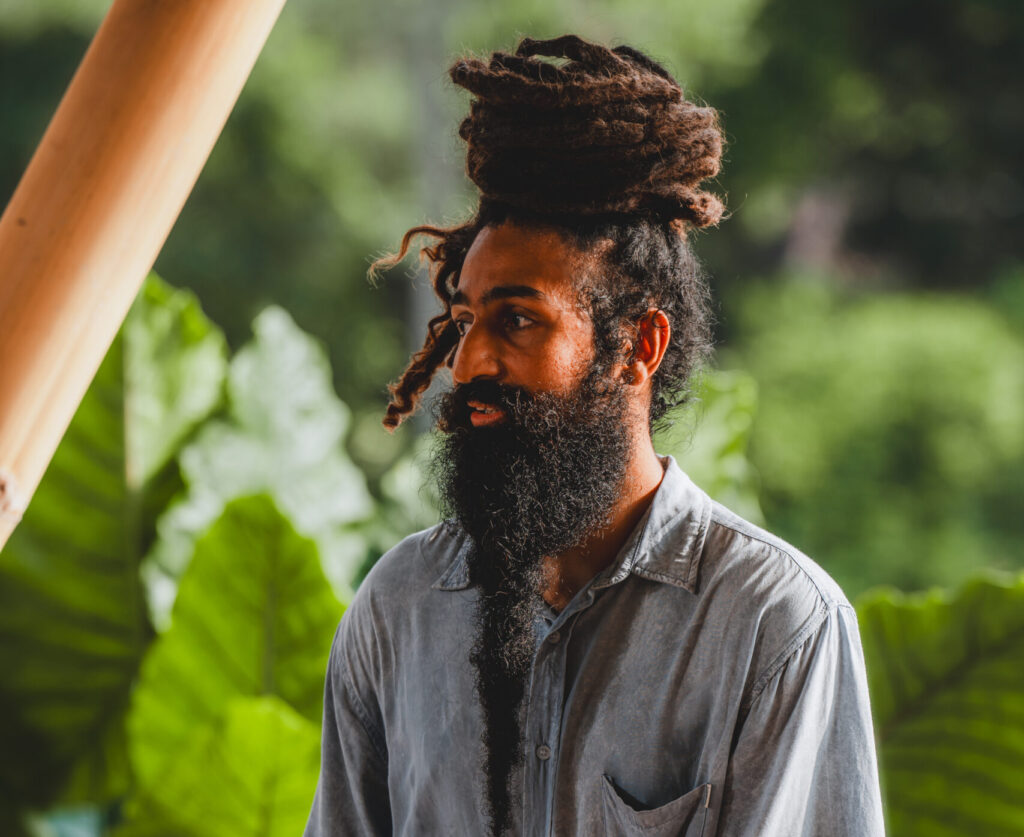Yoga is translated in Sanskrit as Union. But one may ask, union between what? Union can be interpreted in a dozen different ways. Some see union as a sort of union between mind and body. Others might see union as one between the individual soul and the god. While these definitions are all great, they don’t really capture the essence of what the yoga philosophy is trying to teach us.
Patanjali, a sage that lived in India over 2500 years ago described yoga as ‘the process of calming the fluctuations of the mind’. Thus, this union can be seen as a process; a journey rather than a goal. To understand what Patanjali meant by fluctuations we will explore many other background concepts. Essentially one can see the mind as a projector. It is projecting or creating the reality that we are embodied within. The mind has an immense power, but often loses this power because it is spread thin. It is spread thin because of multiple fluctuations.
One of the first fluctuations is future based thinking. We have become habituated to continually think about the future. I wake up in the morning, thinking about what I will do during the day. As I am actually doing those things I am continually thinking about what I will do the next week and so on. It has become a pattern of the mind to constantly plan, dream and scheme out our future. It becomes boring, unproductive and uncomfortable when I simply remain engrossed in the present, just as it is. This is after all what the whole process of yoga is about. The experience of yoga (union) can only take place in the Now; in this present moment. We cannot experience this union in a distant future that is not yet here.
Similarly another fluctuation of the mind is becoming fixated on memories of the past. Whether a positive or negative memory; whether a regret for what we did in the past or a desire for an experience to repeat itself. This again takes us just outside our ability to experience yoga. We cannot experience unity in a situation that has already passed us by. We must and can only experience it at this very moment. From one moment to the next moment. The present moment is the only place we have available to experience this union. Thus the first two fluctuations that we must calm, are excessively thinking about our future and past.
Another set of fluctuations closely tied to future and past based thinking are Raga (cravings) and Dvesha (aversions). These are also seen as the root causes of misery or suffering. When we crave an experience or material object that we don’t currently possess, we are unable to remain present. Our cravings are future projections based on our past experiences. For instance, I would not crave chocolate in the near future, unless I have had an experience of eating chocolate in my past. Thus, craving takes us out of the present moment, where yoga can be experienced.
When it comes to aversion, we are pushing away an experience that we are having in the here and now. We are doing all we can to not experience the present moment; distracting ourselves and fighting a battle with the here and now. Thus aversion too takes us out of the present moment. When we are either craving, or averse to something we are discontent. Contentment (Santosha) is the capacity to be happy and grateful for what we have in the present moment. Only through practicing contentment with everything that we go through, can we begin to cultivate presence.
Presence is the ability for our attention or awareness to be entirely fixated on the present moment. Cultivating our presence is the first step on the path towards experiencing yoga (union). We can cultivate presence by letting go of excessive future and past based thinking as well as overcoming our cravings and aversions. Doing this is much easier said than done. It is believed in yoga philosophy as well as Buddhism that we don’t actually crave or become averse to objects and experiences around us. We start craving and become averse to the sensations on our body that develop when we interact with these objects and experiences. For instance, one feels pleasant sensations when one eats chocolate, or has sex, or is complimented and so on. Conversely, one feels unpleasant sensations when one gets bitten by an insect, or is stressed at work, or is being yelled at and so on. We don’t actually crave the chocolate or sex, but we develop craving towards the sensations that are produced on our body when we come into contact with these sense objects. Similarly, we are not averse to a situation at work, but we develop an aversion to the sensation that is produced when that particular situation arises. Thus, the ancient yogis taught to change the way in which we react to various sensations.




5 Responses
Greetings! Very useful advice in this particular article!
It’s the little changes that produce the most significant changes.
Thanks a lot for sharing!
When someone writes an piece of writing he/she
maintains the idea of a user in his/her brain that how a user can understand it.
Thus that’s why this piece of writing is amazing. Thanks!
I always appreciate reading your posts. Thanks for sharing your insights and ideas with your readers.
Your blog is a great resource for anyone interested in learning about a variety of subjects. Thanks for all that you do.
Wow, your post really resonated with me! You’ve got a great way of capturing readers’ interest.